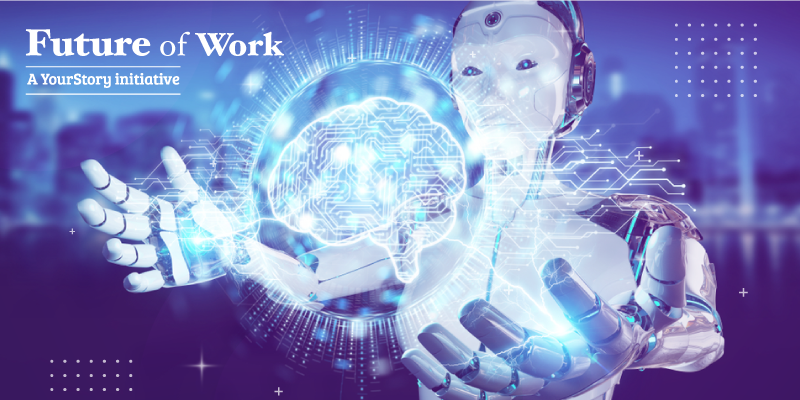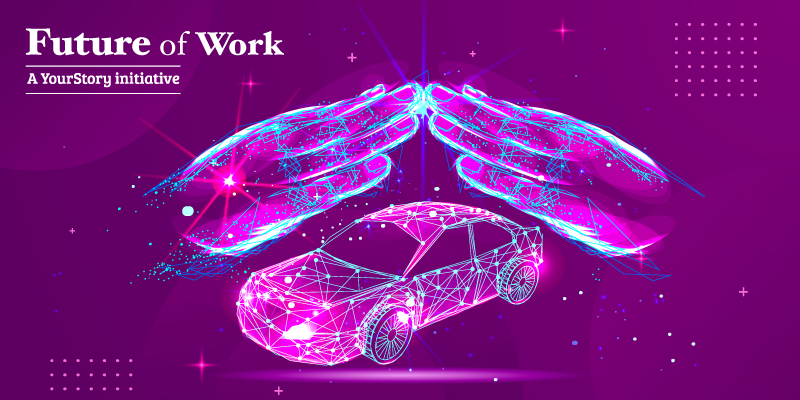
How AI is shaping the new life in life sciences and pharmaceutical industry
Add Your Heading Text Here

The pharma and life sciences industry is faced with increasing regulatory oversight, decreasing R&D productivity, challenges to growth and profitability, and the impact of artificial intelligence (AI) in the value chain. The regulatory changes led by the far-reaching Patient Protection and Affordable Care Act (PPACA) in the US are forcing the pharma and life sciences industry to change its status quo.
Besides the increasing cost of regulatory compliance, the industry is facing rising R&D costs, even though the health outcomes are deteriorating and new epidemics are emerging. Led by the regulatory changes, the customer demographics are also changing. The growth is being driven by emerging geographies of APAC and Latin American region.
Disruption in life sciences
Pharmaceutical organisations can leverage AI in a big way to drive insightful decisions on all aspects of their business, from product planning, design to manufacturing and clinical trials to enhance collaboration in the ecosystem, information sharing, process efficiency, cost optimisation, and to drive competitive advantage.
AI enables data mining, engineering, and real time- and algorithmic-driven decision-making solutions, which help in responding to the following key business value chain disruptions in the pharmaceutical industry:
- AI-driven drug discovery – Enables scientists to source scientific findings and insights from external labs or internal knowledge to jump start discovery which will in turn help reduce cycle time for product development aiding faster go-to-market
- Reduce cycle times for clinical trials– Through better insights driven by improved accuracy of machine-based ensemble algorithms
- Supply chain transformation – Building predictive algorithms using a combination of internal and external data would help reduce unforeseen shortages in availability of drugs impacting customer service levels and lost sales revenues
- Product failure prediction – Via root cause analysis and predictive algorithms of product failures (vendor data)
- Risk management – For evaluation of potential risks posed by elemental impurities in a formulated drug product
- Real-time medical device analysis and visualisation– Leveraging interconnecting data from implanted devices and personal care devices
- Behavioural sciences – To more fully understand customer perceptions about their products which helps in proactively fixing product issues or managing communication better
- Enhance reporting systems– To meet the changing regulatory compliance needs more effectively
- Intelligent insights – Renew focus on understanding the underlying business data and generating insights using latest insights and intelligence frameworks
The human microbiome
Though genomics currently hogs the spotlight, there are plenty of other biotechnology fields wrestling with AI. In fact, when it comes to human microbes – the bacteria, fungi, and viruses that live on or inside us – we are talking about astronomical amounts of data. Scientists with the NIH’s Human Microbiome Project have counted more than 100 trillion microbes in the human body.
- Cambridge Semantics has a developed semantic web technologies that help pharmaceutical companies sort and select which businesses to acquire and which drug compounds to license.
- Data scientists at the Broad Institute of MIT and Harvard have developed the Integrative Genomics Viewer (IGV), open source software that allows for the interactive exploration of large, integrated genomic datasets.
- GNS Healthcare is using proprietary causal Bayesian network modeling and simulation software to analyse diverse sets of data and create predictive models and biomarker signatures.
Genomics
- Sequencing millions of human genomes would add up to hundreds of petabytes of data.
- Analysis of gene interactions multiplies this data even further.
In addition to sequencing, massive amounts of information on structure/function annotations, disease correlations, population variations – the list goes on – are being entered into databanks. Software companies are furiously developing tools and products to analyse this treasure trove.
Robust algorithms with massive data engineering capabilities
Related Posts
AIQRATIONS

How the insurance industry can leverage AI to enhance efficiencies
Add Your Heading Text Here

This second machine age has seen the rise of artificial intelligence (AI), or intelligence that is not the result of human cogitation. AI is now ubiquitous in many commercial products, from search engines to virtual assistants.
The massive amounts and the speed at which structured and unstructured (e.g., text, audio, video, sensor) data is being generated has made speedy processing and generation of meaningful, actionable insights imperative.
The insurance industry segment has been conservative in adopting AI across the value chain, but P&C /Life/Reinsurance companies have accelerated the pace of AI adoption and initiated deployment of AI use cases across the value chain.
Here are few of the use cases leveraging AI for the insurance industry:
Personalised customer experience: redefining the value proposition
Many insurers are already in the early stages of enhancing and personalising the customer experience. Exploiting social data to understand customer needs and sentiments about products and processes (e.g., claims) are some early applications of AI.
The next stage in robo-advisor evolution is to offer better intelligence on customer needs and goal-based planning for both protection and financial products. Recommender systems and “someone like you” statistical matching will become increasingly available to customers and advisors.
Up next will be understanding of individual and household balance sheets and income statements, as well as economic, market, and individual scenarios to recommend, monitor and alter financial goals and portfolios for customers and advisors.
Automated and augmented underwriting: enhancing efficiencies
This involves automating large classes of standardised underwriting in auto, home, commercial (small and medium business), life, and group using sensor (IoT) data, unstructured text data (e.g., agent/advisor or physician notes), call centre voice data, and image data using Bayesian learning or deep learning techniques.
The industry will also model new business and underwriting process using soft robotics and simulation modeling to understand risk drivers and expand the classes of automated and augmented (i.e., human-performed) underwriting.
We will also see augmenting of large commercial underwriting and life/disability underwriting by having AI systems (based on NLP and DeepQA) highlight key considerations for human decision-makers. Personalised underwriting by a company or individual takes into account unique behaviours and circumstances.
Robo-claims adjuster
This will help build predictive models for expense management, high value losses, reserving, settlement, litigation, and fraudulent claims using existing historical data. It will also help analyse claims process flows to identify bottlenecks and streamline flow, leading to higher company and customer satisfaction.
Building a robo-claims adjuster by leveraging predictive models and building deep learning models that can analyze images to estimate repair costs can change status quo. In addition, use of sensors and IoT to proactively monitor and prevent events can reduce losses.
A claims insights platform that can accurately model and update frequency and severity of losses over different economic and insurance cycles (i.e., soft vs. hard markets) can help the industry. Carriers can apply claims insights to product design, distribution, and marketing to improve overall lifetime profitability of customers.
Emerging risks and new product innovation
Identifying emerging risks (e.g., cyber, climate, nanotechnology), analyse observable trends, determining if there is an appropriate insurance market for these risks, and developing new coverage products in response historically have been creative human endeavors.
Man and machine learning
Artificial general intelligence (AGI) that can perform any task that a human can is still a long way off. In the meantime, combining human creativity with mechanical analysis and synthesis of large volumes of data – in other words, man-machine learning (MML) – can yield immediate results.
For example, in MML, the machine learning component sifts through daily news from a variety of sources to identify trends and potentially significant signals. The human learning component provides reinforcement and feedback to the ML component, which then refines its sources and weights to offer broader and deeper content.
Using this type of MML, risk experts (also using ML) can identify emerging risks and monitor their significance and growth. MML can further help insurers to identify potential customers, understand key features, tailor offers, and incorporate feedback to refine new product introduction.
AI implications for insurers
Improving Efficiencies: AI is already improving efficiencies in customer interaction and conversion ratios, reducing quote-to-bind and FNOL-to-claim resolution times, and increasing new product speed-to market. These efficiencies are the result of AI techniques speeding up decision-making (e.g., automating underwriting, auto-adjudicating claims, automating financial advice, etc.).
Improving effectiveness: Because of the increasing sophistication of its decision-making capabilities, AI soon will improve target prospects to convert them to customers, refine risk assessment and risk-based pricing, enhance claims adjustment, and more. Over time, as AI systems learn from their interactions with the environment and with their human masters, they are likely to become more effective than humans and replace them. Advisors, underwriters, call centre representatives, and claims adjusters likely will be most at risk.
Improving risk selection and assessment: AI’s most profound impact could well result from its ability to identify trends and emerging risks, and assess risks for individuals, corporations, and lines of business. Its ability to help carriers develop new sources of revenue from risk and non-risk based information will also be significant.
Read more at: https://yourstory.com/2020/02/insurance-industry-leverage-ai-enhance-efficiencies

